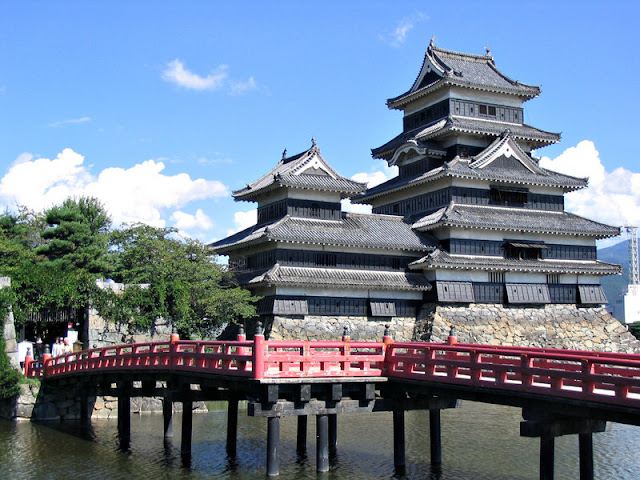The keep (tenshukaku), which was completed in the late 16th century, maintains its original wooden interiors and external stonework. It is listed as a National Treasure of Japan.
Matsumoto Castle is a flatland castle (hirajiro) because it is not built on a hilltop or amid rivers, but on a plain. Its complete defences would have included an extensive system of inter-connecting walls, moats and gatehouses.
In 1872, following the Meiji Restoration, the site, like many former daimyos' castles, was sold at auction for redevelopment. However, when news broke that the keep was going to be demolished, an influential figure from Matsumoto, Ichikawa Ryōzō, along with residents from Matsumoto started a campaign to save the building. Their efforts were rewarded when the tower was acquired by the city government.
In the late Meiji period the keep started to lean to one side. An old picture (shown below) clearly shows how the keep looked like then. It was because of neglect coupled with a structural defect, but a lot of people believed the story of Tada Kasuke's curse.
A local high school principal, Kobayashi Unari, decided to renovate the castle and appealed for funds. The castle underwent "the great Meiji renovation" between 1903-1913. It underwent another renovation "the great Shōwa renovation" in the period 1950-1955.
In 1990, the Kuromon-Ninomon (second gate of the Black Gate) and sodebei (side wall) were reconstructed. The square drum gate was reconstructed in 1999.
Matsumoto Castle
4/
5
Oleh
Unknown














